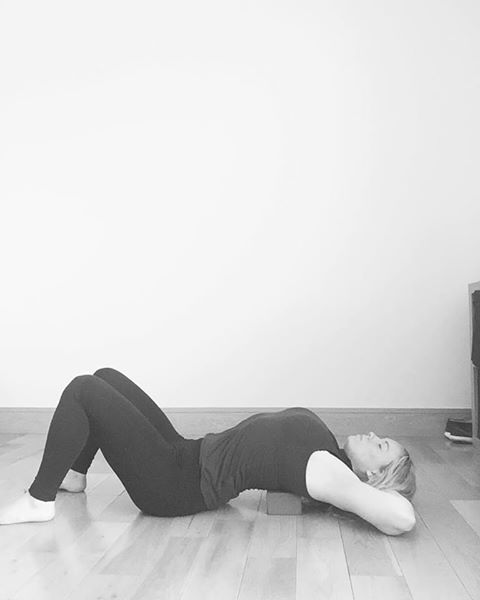|
Thoracic mobility. By design there is less mobility available in the thoracic spine in comparison to the cervical (neck) and lumbar (low back), due to the attachment of the ribcage. This doesn't mean however that there isn't movement here or we shouldn't work on keeping the movement of the thoracic spine optimal. Due to modern life and the prevalence of technology, life brings our shoulders forward and our thoracic spines back into flexion. This pose is a lovely passive pose that you can do prior to doing more active thoracic mobility, it will create short term changes in your nervous system to allow you to feel more mobility and openness and make the active work more accessible. If the thoracic spine is immobile it can have wide reaching consequences from additional neck and shoulder stress to low back stress and can impact on your breathing potential. Try it and then move your thoracic spine in all of its ranges of motion, flexion, extension (forward and backward), lateral extension (side to side) and rotation (twisting). Your spine has the potential for so many ranges and possibilities, if we weren't designed to move it, we would have one long bone along the centre. Explore all the capabilities that your body has the innate capacity to do. If it feels too much with a block try rolling or folding a blanket or towel and gradually progress to a block.
0 Comments
Leave a Reply. |
AuthorAdvanced clinical massage therapist and yoga teacher. Archives
December 2023
Categories
All
|

 RSS Feed
RSS Feed